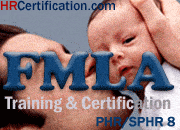
Return-to-Work Programs That Reduce Risk
10/27/2025A strong return-to-work program does more than check a compliance box—it helps employees transition back safely while reducing your organization’s legal risk. Whether an employee is returning after FMLA, ADA, PWFA, or Workers’ Comp leave, the goal is the same: balance recovery, productivity, and compliance. In this guide, we’ll walk through how to design a return-to-work program that supports employees, meets legal standards, and protects your business from costly mistakes.
Why Return-to-Work Programs Matter
A structured return-to-work (RTW) program is a strategic asset for any HR department. By creating a formal process for reintegrating employees after a leave of absence, organizations can significantly reduce lost productivity and lower the costs associated with extended absences and workers' compensation claims. More importantly, a well-executed program is a powerful tool for risk management, substantially lowering the likelihood of costly FMLA interference claims or ADA discrimination lawsuits.
Beyond compliance, these programs demonstrate a tangible commitment to employee well-being and safety. When employees feel supported during their recovery, morale improves, and retention rates increase. A clear, consistent process removes uncertainty and builds trust, showing your team that the company is invested in their successful return.
Step 1 — Understand the Legal Framework Behind Return-to-Work
Your RTW program must be built on a solid understanding of overlapping federal laws. Each one provides different rights and protections that shape your procedures.
FMLA: Reinstatement to an Equivalent Position
The Family and Medical Leave Act (FMLA) guarantees that an employee returning from leave is reinstated to their original job or an "equivalent" one. An equivalent position must have the same pay, benefits, and other terms and conditions of employment. Your program must document these reinstatement offers clearly. If you offer a light-duty position as an alternative, the employee on FMLA leave has the right to refuse it in favor of remaining on their protected leave.
ADA: Reasonable Accommodation and “Essential Functions”
The Americans with Disabilities Act (ADA) often comes into play when an employee returns with ongoing medical restrictions. The ADA may require you to provide a reasonable accommodation to help the employee perform the "essential functions" of their job. This could include a modified work schedule, specialized equipment, or even an extended period of leave if it doesn't cause an "undue hardship" for the business. Undue hardship means significant difficulty or expense, and it must be assessed on a case-by-case basis and thoroughly documented.
PWFA: Pregnancy-Related Return-to-Work Protections
The Pregnant Workers Fairness Act (PWFA) reinforces protections for employees returning from pregnancy-related leave. It requires employers to provide reasonable accommodations for known limitations related to pregnancy, childbirth, or related medical conditions. This can include modified duties (like avoiding heavy lifting), providing a private space for lactation, or allowing a flexible schedule to attend follow-up medical appointments. Like the ADA, the PWFA generally requires reinstatement to the employee's original position.
Step 2 — Assign Responsibility for Return-to-Work Decisions
A common point of confusion is who makes the final call on an employee's return. While you will receive medical notes and fitness-for-duty certifications from healthcare providers, the ultimate legal responsibility rests with the employer.
Medical professionals provide crucial information about an employee's functional abilities and limitations. However, it is HR's job to analyze that information in the context of the workplace. HR, in consultation with legal counsel and management, must determine if a reasonable accommodation is available and whether the employee can safely perform their job.
This includes assessing if the employee's condition poses a "direct threat"—a significant risk of substantial harm to themselves or others that cannot be eliminated or reduced by a reasonable accommodation. This determination cannot be based on stereotypes; it requires an individualized assessment based on objective medical evidence. Documenting every step of this analysis is crucial for compliance defense.
Step 3 — Create a Structured Return-to-Work Process
A consistent, documented process ensures fairness and minimizes risk. It should outline the steps from the moment an employee signals their intent to return until they are fully reintegrated.
Medical Certification and Documentation
Your program should clearly state what documentation is required for an employee to return. Typically, this is a fitness-for-duty certification from their healthcare provider that addresses their ability to perform essential job functions. It's critical that any request for medical information includes GINA-compliant "safe harbor" language, which instructs the provider not to include any genetic information in their response.
Reinstatement Procedures
The process must default to the strictest legal standard. When FMLA, ADA, and PWFA overlap, this generally means reinstating the employee to their original position, with or without accommodation. Any deviation from this, such as a move to an equivalent role, should be documented and, ideally, agreed to by the employee. If the employee is returning with restrictions, this is the point where the interactive process for accommodations begins in earnest.
Communication with Managers and Supervisors
Train managers that they are not to seek medical details from the employee. HR's role is to act as the information gateway. Provide supervisors with only the functional information they need to manage work, such as, "Jane can return on Monday but is restricted from lifting more than 10 pounds for the next four weeks." Aligning HR, legal (when necessary), and management on this communication protocol is essential to prevent privacy violations.
Step 4 — Offer Transitional or Light-Duty Assignments
Transitional or light-duty assignments are an effective way to bring employees back to work sooner while respecting their medical restrictions. These temporary roles can be a form of reasonable accommodation under the ADA.
When structuring these assignments, it's important to remember the FMLA context. During an employee's 12-week FMLA entitlement, they cannot be forced to accept a light-duty assignment. They can, however, accept it voluntarily. Once FMLA is exhausted, refusing a reasonable light-duty offer under the ADA could have employment consequences.
Your program should clearly define how these assignments are created, offered, and managed. Document the specific duties, the expected duration, and the plan for transitioning the employee back to their full duties. This ensures the assignment is a temporary, goal-oriented bridge back to work, not a permanent, dead-end position.
Step 5 — Support Reduced Schedules and Gradual Reintegration
Not every employee can return to a full 40-hour week immediately. A flexible RTW program should support gradual reintegration through reduced or modified schedules. This can be a powerful reasonable accommodation under the ADA and PWFA.
Options include allowing an employee to work part-time for a few weeks, providing a flexible start and end time to manage fatigue, or building up their workload progressively. This approach should be tied to medical guidance and a clear plan. Throughout this period, ensure that pay, benefits accrual, and supervision are aligned with the adjusted schedule to avoid payroll errors and employee confusion.
Step 6 — Coordinate with Workers’ Compensation and Benefits
When a leave is caused by a workplace injury, you must coordinate your RTW program with your Workers’ Compensation (WC) carrier. The goal is often the same: return the employee to productive work as safely and quickly as possible.
Ensure that your FMLA and WC leave designations run concurrently. Communicate with the WC case manager about available light-duty assignments and return-to-work plans. You also need to manage how wage replacement benefits from WC interact with any company-paid leave, like PTO. Clear communication prevents double-counting of leave, conflicting information, and benefit payment errors.
Step 7 — Handle Confidential Medical Information Properly
Strict confidentiality is non-negotiable. Your RTW program must have ironclad procedures for handling medical records in compliance with the ADA, FMLA, and GINA.
All medical documents—including doctor’s notes, accommodation requests, and fitness-for-duty forms—must be stored in a secure medical file, entirely separate from the employee's main personnel file. Access to this information should be restricted to a small number of designated HR professionals on a need-to-know basis. Supervisors should never have access to these files. This separation is a fundamental compliance requirement and a critical part of building employee trust.
Step 8 — Reassignment When Full Return Isn’t Possible
In some cases, an employee may not be able to return to their original job, even with accommodations. Before moving toward termination, the ADA requires you to consider reassignment as an accommodation of last resort.
Your program should outline this process. It involves identifying a vacant, equivalent position for which the employee is qualified and offering it to them. The employee does not have to be the best-qualified candidate to be entitled to the position. If no equivalent position is available, you should consider vacant lower-level positions. This entire interactive process, including the job search and all offers made, must be meticulously documented.
Step 9 — Train Supervisors and Review Program Annually
A program is only as good as its execution. Regular training is essential for supervisors, who are on the front lines of managing returning employees. They must be educated on how to discuss work restrictions without asking for medical details, how to support accommodations, and when to escalate issues to HR.
Your RTW program is not a static document. Conduct an annual review to ensure it remains compliant with evolving leave laws. Audit your accommodation and leave documentation to identify any gaps or inconsistencies. Use this review to update forms, procedures, and training materials.
Common Mistakes That Increase Risk
- "100% Healed" Policies: Forcing an employee to be fully free of restrictions before returning, which ignores the ADA's mandate to provide reasonable accommodations.
- Automatic Reassignment: Moving an employee to a different (often lesser) role without first attempting to accommodate them in their original position.
- Sharing Medical Details: A supervisor telling team members, "John is out for back surgery," is a serious confidentiality breach.
- Ignoring Accommodation Requests: Dismissing an employee’s request for a reduced schedule or light duty without engaging in the interactive process.
Sample Return-to-Work Program Framework
A robust RTW policy and program should include the following components:
- Policy Statement: The purpose and scope of the program, emphasizing a commitment to safety and compliance.
- Roles and Responsibilities: Clearly defined duties for employees, managers, HR, and safety personnel.
- Process Steps: A detailed workflow for medical clearance, documentation review, accommodation requests, and reinstatement.
- Confidentiality Policy: A strong statement on the handling of medical records in compliance with ADA, FMLA, and GINA.
- Program Review: A commitment to an annual review and update schedule.
Final Takeaway: Safe, Supportive, and Compliant Reintegration
A compliant return-to-work program doesn’t just meet the law—it reduces turnover, prevents claims, and helps employees thrive after leave. It transforms a moment of high legal risk into an opportunity to reinforce your company's culture of support and safety. Start building your own risk-reducing, legally sound return-to-work plan today.




What You'll Learn in This How-To Guide
This guide organizes the essential facts you need to evaluate and pursue HR certification, with direct reference to the HR Generalist Certificate Program offered by HR Certification. You will learn why certification matters, how eligibility typically works, what the step-by-step path looks like, and how to evaluate formats such as in-person versus ...
Human resources careers are accessible to motivated professionals without a college degree. If you are asking how to become human resources certified, the answer is straightforward: there are no legal or college requirements to ...

Human resources teams rely on proven knowledge of employment laws, compliant processes, and practical skills. If you are evaluating how to get HR certification in 2025, the pathway centers on selecting rigorous training that ...



